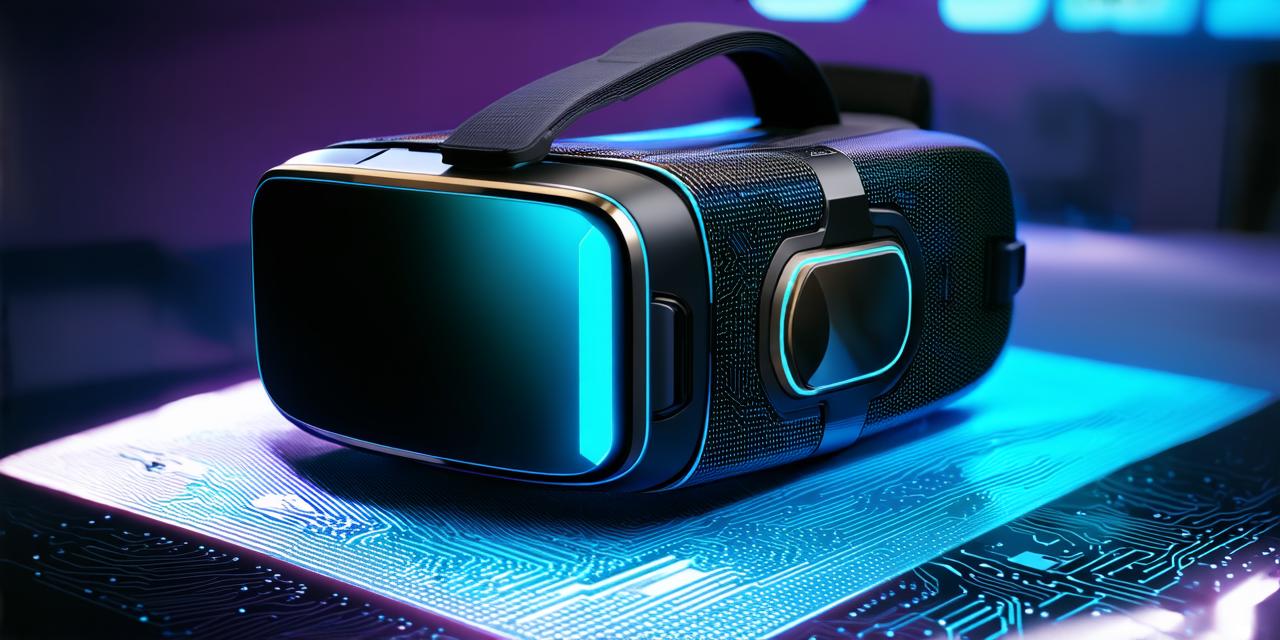Introduction:
Virtual reality (VR) technology has come a long way since its inception in the 1960s. Today, it is becoming increasingly popular as a tool for gaming, education, and even medical treatments. In this article, we will explore the latest advancements in VR technology development, including new hardware, software, and applications.
Hardware Advancements:
One of the biggest advancements in VR technology has been in the hardware used to create immersive experiences. In recent years, we have seen the release of high-end VR headsets such as the Oculus Quest 2 and HTC Vive Pro Eye. These devices offer improved resolution, refresh rates, and field of view, making for a more realistic and immersive experience. Additionally, new haptic technologies are being developed to provide users with more realistic physical sensations when interacting with virtual objects.
Software Advancements:
Another key area of advancement in VR technology has been in the software used to create and distribute content. With the rise of cloud-based gaming platforms like NVIDIA GeForce Now, users can now access high-quality VR games without needing expensive hardware. Additionally, new tools and engines are being developed to make it easier for developers to create and distribute VR content. For example, Unreal Engine 5 includes built-in support for VR development, making it easier than ever to create immersive experiences.
Applications:
The applications of VR technology are vast and varied. In addition to gaming, it is being used in education, training, and medical treatments. For example, virtual reality simulations can be used to train pilots and doctors in a safe and controlled environment. Additionally, VR is being used to treat mental health conditions such as PTSD and anxiety disorders by exposing patients to controlled environments that mimic real-life situations.
Case Studies:
One real-world example of the potential of VR technology can be seen in the field of architecture. Virtual reality allows architects to create immersive 3D models of buildings, which can be used to test and refine designs before they are built. This not only saves time and money, but it also allows for more accurate simulations of how a building will look and function in real life.
Personal Experience:
As someone who has used VR technology extensively for gaming and training purposes, I can attest to its potential. The immersive nature of VR technology makes it possible to experience things that would otherwise be impossible or extremely difficult to do in real life. For example, while using VR for training, I was able to simulate complex procedures without the risk of injury or damage to equipment.
Expert Opinion:
According to Dr. Nick Yee, a researcher at the University of Washington’s School of Information, “VR technology is rapidly advancing, and we are seeing new applications emerging in fields like healthcare, education, and entertainment. The potential for VR to improve our lives is enormous, and I believe we will see even more exciting developments in the coming years.”
FAQs:
What is the latest advancement in VR technology?
The latest advancements in VR technology include new hardware such as the Oculus Quest 2 and HTC Vive Pro Eye, which offer improved resolution and refresh rates. Additionally, new haptic technologies are being developed to provide users with more realistic physical sensations when interacting with virtual objects.
How is VR technology being used in healthcare?
VR technology is being used in healthcare to treat mental health conditions such as PTSD and anxiety disorders by exposing patients to controlled environments that mimic real-life situations. Additionally, virtual reality simulations can be used to train pilots and doctors in a safe and controlled environment.
What are some real-world applications of VR technology?
Real-world applications of VR technology include architecture, education, training, and entertainment. For example, virtual reality allows architects to create immersive 3D models of buildings, which can be used to test and refine designs before they are built.
